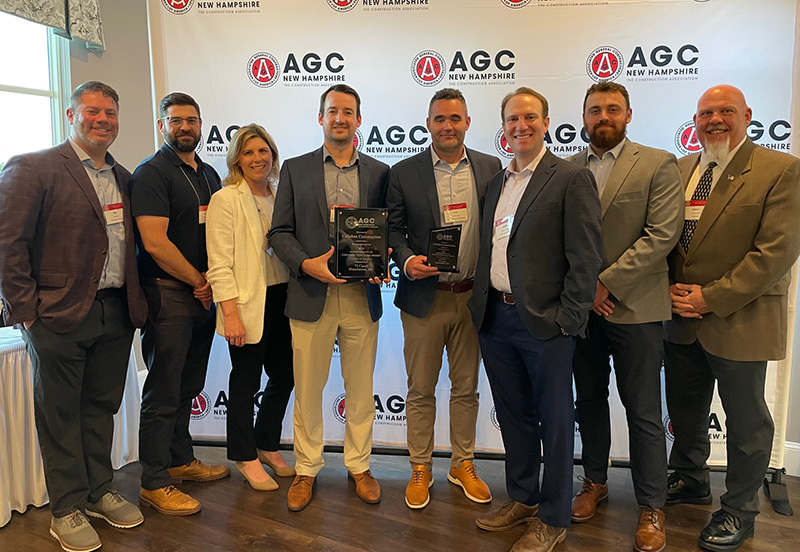News: Construction Design & Engineering
Posted: May 15, 2008
BIM technology create construction management advantages for owners
The construction industry is finally starting to fully embrace the computer revolution, with new technologies providing owners and developers with considerable cost saving efficiencies. Three dimensional computer modeling along with building information modeling (BIM) systems offer a unique opportunity to see a project in full detail before it is built. The owner is able to alter plans well before construction has started, resulting in a more functional facility that is built with virtually no costly change orders during construction.
In a nutshell, BIM is the creation of a complete digital representation of all stages of the building process in order to facilitate the exchange of project information in a digital format. BIM utilizes three-dimensional modeling concepts, information technology, and interoperable software to design, construct and operate/maintain a facility virtually. It allows for the effective management of the pre-fabrication of project materials and the creation of new and innovative solutions for practically every facility type. This enables owners to not only gain the decision-making advantages associated with 3D visualization in the design phase, they can also gain the significant time and cost savings that result when design issues and spatial conflicts among building systems are resolved before breaking ground. After the ribbon is cut, they can continue to use this technology in-house as a powerful facilities operations and maintenance (O&M) tool.
EMCOR first began use of BIM several years ago and currently deploys the technology at 26 of its operating companies. Participating companies are interconnected through a common platform that enables them to aggregate and deploy the technology and information anywhere, as needed.
While the technology has been widely utilized on the West Coast for at quite some time, in New England it is just starting to gain traction with owners, designers and contractors. Tucker Mechanical has become widely versed in BIM technology, and has employed it on several highly complex and fast track projects that are currently under construction, including a major expansion at Mohegan Casino, a laser manufacturing facility in Farmington, a cogeneration plant for Kimberly Clark in New Milford, and a new parking garage for Quinnipiac University in Hamden.
BIM is much more than an electronic drawing tool. Driven by an information-rich database, it enables members of the project team to simulate the structure and all of its systems in three dimensions and to share this information. The drawings, specifications and construction details are integral to the model. As a result, the team members are able to identify design issues and construction conflicts well before the first earth mover arrives at the site.
A project can realize its greatest potential and highest value when it is collaboratively designed and built -- that is, when the entire design team works together starting in the early planning and design phase. When effectively used by all key members of a project team — the architecture/engineering firm (A/E), general contractor or construction manager, and specialty contractors, in particular, the mechanical, electrical, plumbing and fire protection contractors — BIM is a platform for true collaboration. In fact, input from the mechanical, electrical, plumbing and fire protection contractors in the design phase is critically important to prevent collisions or conflicts in the field. BIM facilitates the delivery of that input, to ensure there are no costly mistakes or delays down the road.
Owners who have become familiar with the benefits of BIM are starting to demand its use. They understand the potential time and cost savings and, more importantly, realize that with BIM "what you see is what you get," resulting in a better facility. Perhaps the most exciting part of BIM is that while accomplishing so much on behalf of owners and contractors over the last few years in New England, it's really just the beginning; the use of BIM technology in facility contracting is in its infancy; our capacity to utilize it is increasing all the time.
Robert Turner is president & CEO, and Matt Oswalt the CAD manager at Tucker Mechanical, a subsidiary of EMCOR Group, Inc., Meriden, Conn.
MORE FROM Construction Design & Engineering
Nobis Group awards Robinson and Moreira STEM scholarships
Concord, NH Nobis Group, a 100% employee-owned consulting firm specializing in engineering and environmental solutions across the Northeast, has named the recipients of its 2025 STEM Scholarship: Andie Moreira of

Quick Hits
Columns and Thought Leadership

Careers in Construction Month focus on training and safety - by Joe Camilo
October is Careers in Construction Month, and rarely has it been more consequential. According to our chapter’s national parent organization, the construction industry needs to attract half-a-million new workers in the coming year to meet demand. Addressing that need is a huge job, but we at ABC MA are trying to do our part.

The rise of incubators and co-working spaces: The latest in life sciences - by Matt Combs
In recent years, the life science industry has witnessed a shift in how companies operate and innovate. One of the key driving forces behind this transformation is the emergence of incubators and co-working spaces specifically tailored to meet the unique budget and schedule needs of startups.

Ask the Electrician: Is summer a prime time for commercial electrical maintenance?
The answer is “Yes!” While January marks the official new year, many businesses view September as a fresh start. This makes summer an ideal time for commercial property owners to schedule long-term electrical maintenance projects.

The design-build advantage: Integrated interior design solutions - by Parker Snyder
When it comes to corporate interior spaces for both commercial and industrial projects, partnering with a design-build firm with in-house interior design services can offer clients many benefits. Unlike traditional delivery methods where interior designers operate independently from the design and construction teams, often creating a longer project timeline as cost negotiations and revisions ensue







